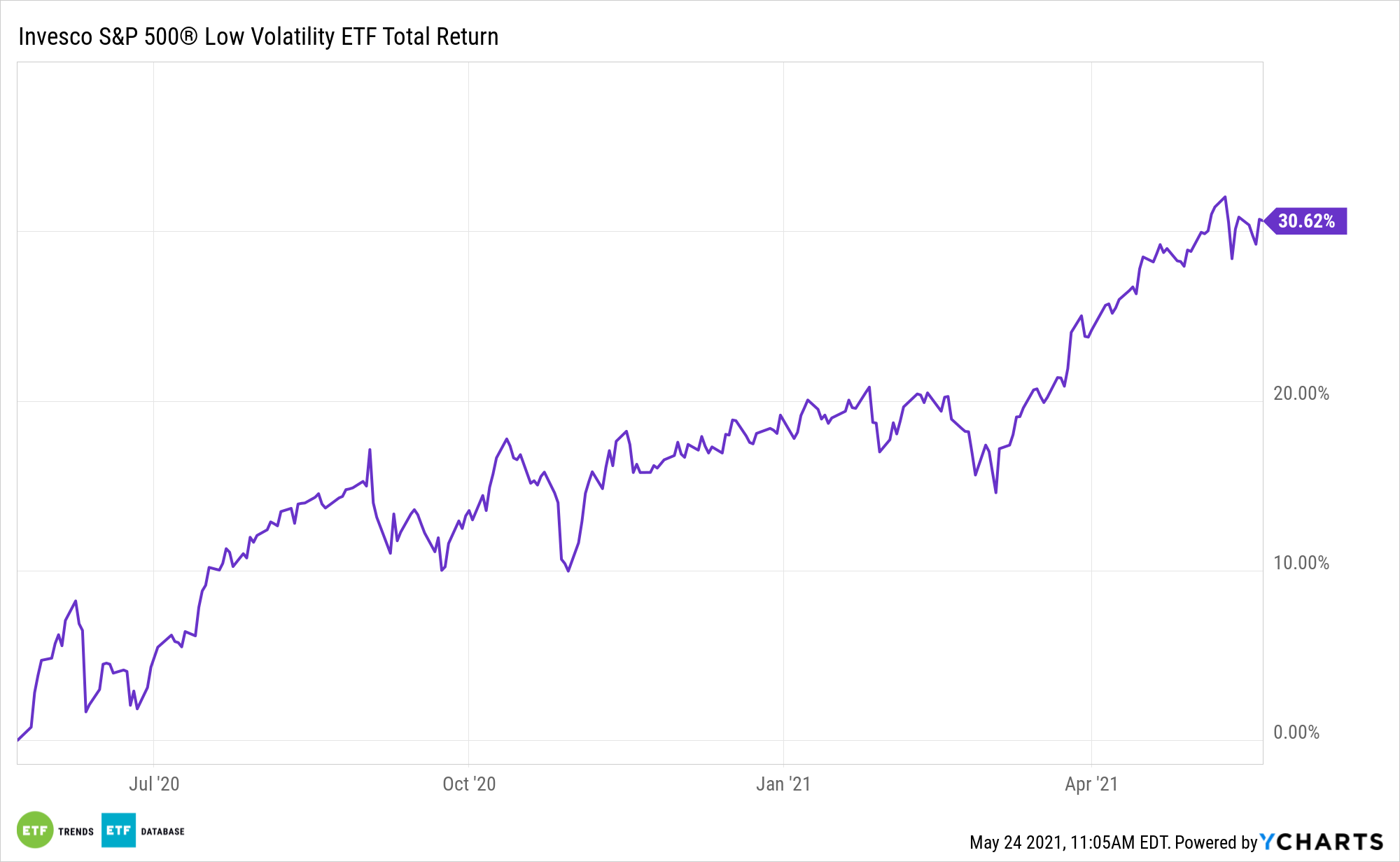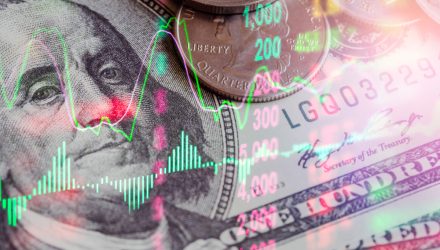The Invesco S&P 500 Low Volatility ETF (SPLV) is a passive exchange traded fund, but there are times when it undergoes some noticeable sector shifts.
SPLV, one of the titans among “low vol” ETFs, follows the S&P 500® Low Volatility Index. Both the ETF and the benchmark are rebalanced four times a year, with the most recent example occurring on May 21. The result is new/old look for SPLV, as its sector weights are starting to look more like they did prior to the coronavirus pandemic.
“Stalwarts like Financials, Real Estate, and Utilities resumed their places in the index; Utilities added 11% to its weight. Health Care, Communication Services, and Technology (sectors that were the lifelines of locked-down livelihoods) scaled back to make room,” according to S&P Dow Jones Indices.
As of May 20, SPLV had just a 4.80% allocation to utilities. At the top of the fund, consumer staples and healthcare stocks commanded 25.51% and 21.56%, respectively.

SPLV: Low Volatility Across the Board
Sector shifts in SPLV aren’t surprising because the fund is designed to be sector-agnostic. The S&P 500 Low Volatility Index is home to the 100 stocks from the S&P 500 with the lowest trailing 12-month volatility. There is no sector constraint or requirement on the benchmark. That’s important because volatility is declining across the board.
“While volatility in all sectors declined by at least 10%, the biggest drops came in Energy, Financials, and Utilities, which declined by approximately 20%,” said S&P Dow Jones, referencing the three months ending April 30.
While energy’s turbulence noticeably retreated, it’s still high enough to keep it out of SPLV. That’s the only one of the 11 GICS sectors currently absent from the fund.
Aside from sector shifts, investors considering SPLV, or any competing fund for that matter, should remember that the primary performance objective of low volatility strategies is to expose investors to less downside when markets decline. The objective isn’t to deliver 100% upside capture in strong bull markets.
This year, SPLV is up 9.6%, trailing the S&P 500 by 170 basis points, but the Invesco fund has been 260 basis points less volatile the benchmark domestic equity gauge. Over the past three- and five-year periods, SPLV has indeed been less volatile on an annualized basis than the S&P 500. Plus, SPLV offers a higher level of income. Its dividend yield of 1.88% is 47 basis points higher than the S&P 500’s.
For more news, information, and strategy, visit the ETF Education Channel.
The opinions and forecasts expressed herein are solely those of Tom Lydon, and may not actually come to pass. Information on this site should not be used or construed as an offer to sell, a solicitation of an offer to buy, or a recommendation for any product.








